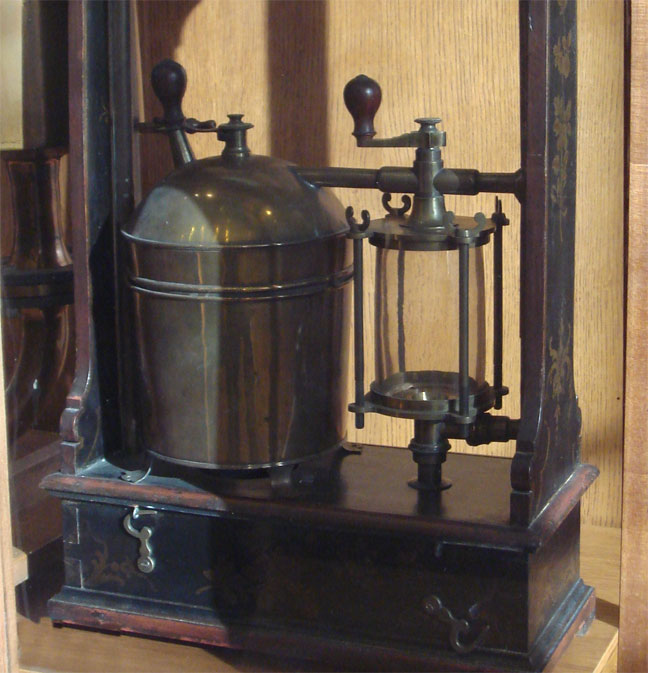
In 1698 Thomas Savery invented the first steam pump. It was designed to help pump water out of flooded mines. The was limited by the fact that it could only pump water up 25 feet.
Thomas Savery was an English inventor and military engineer, most famous for his pioneering work in steam power. Born in 1650, Savery’s primary contribution to the field of engineering was driven by a pressing problem of his time—the frequent flooding of mines. The accumulation of water in deep mines posed a significant challenge to miners, who struggled to find efficient methods to pump the water out. Inspired by the work of French physicist Denis Papin, who had observed that steam could lift the lid of a pressure cooker, Savery became convinced that steam power could be harnessed to solve this problem.
In 1698, Savery developed and patented a device called the “Miner’s Friend,” which was one of the earliest practical steam-powered machines. His invention consisted of a complex system of pipes, valves, and condensers designed to lift water out of flooded mines. The device worked by boiling water to create steam, which was then used to create a vacuum when condensed. This vacuum would suck water up from the mine. However, Savery’s machine had a significant limitation: it could only lift water up to a height of around 25 feet, making it impractical for deeper mines. Additionally, it was prone to explosions due to the high pressure involved, which made it dangerous.
Despite these limitations, Savery’s invention was groundbreaking. It was the first application of steam power to an industrial problem, marking the beginning of the use of steam in mining and paving the way for future advancements. Recognizing the limitations of his machine, Savery began working with Thomas Newcomen, another inventor who shared his interest in steam power. Newcomen improved upon Savery’s design by creating the atmospheric steam engine around 1712, which used a piston and cylinder mechanism. This engine was much safer and more efficient, as it could lift water from much greater depths. Unlike Savery’s pump, Newcomen’s engine used atmospheric pressure to drive the piston, avoiding the dangerous high pressures of Savery’s design.
Together, Savery and Newcomen’s work laid the foundation for the widespread use of steam power in the 18th century. While Savery’s “Miner’s Friend” was a significant step forward, it was Newcomen’s atmospheric engine that became the more widely adopted technology in mines across England. The combined efforts of the two men led to the gradual improvement of steam engines, which would later be perfected by James Watt in the 1760s. Watt’s modifications would usher in the Industrial Revolution, during which steam engines powered factories, trains, and ships, revolutionizing transportation and manufacturing.
Savery’s contributions to the field of steam power, although overshadowed by later inventors like Newcomen and Watt, were nonetheless critical in the early stages of industrial engineering. His vision of harnessing steam to solve practical problems set in motion a chain of events that transformed mining, industry, and society. Today, Savery is remembered as one of the pioneers of steam technology, a key figure in the early development of mechanical engineering. His invention of the “Miner’s Friend” represents the first major step toward the widespread use of steam power, which would eventually fuel the engines of progress during the Industrial Revolution.
 >
>